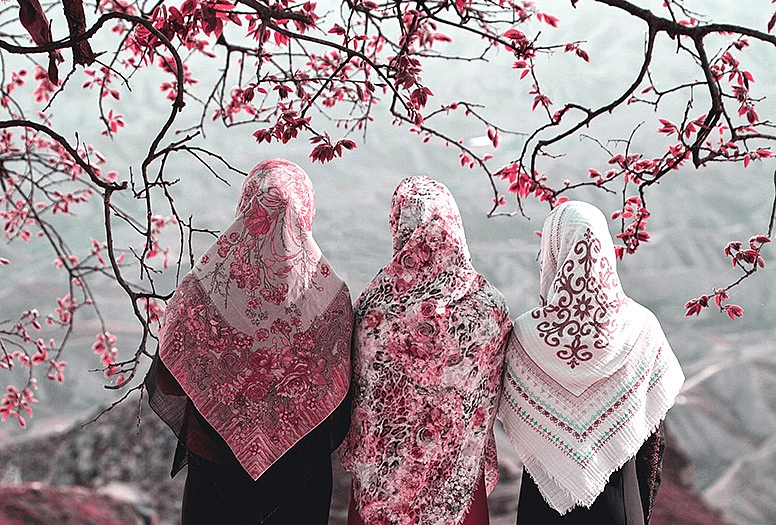
Hijab: Exploring Types, Materials, and Common Mistakes to Avoid
The wearing of hijab is a religious and cultural practice of Muslim women, which is an integral part of their Islamic identity. It is a form of modesty, privacy, and religious observance. Wearing hijab has been practised by Muslim women for centuries, and its styles have evolved over time, reflecting the diversity of Muslim cultures around the world.
Types and styles of hijab
Let's take a look at the different types and styles of hijab, the materials used in making hijab, hijab mistakes, and hijab types from around the world.
Traditional Hijab

The traditional hijab is the most commonly worn style of hijab and is recognized for its simple and elegant design. It is a rectangular piece of fabric that covers the head, neck, and chest. The traditional hijab can be worn in a variety of ways, with the most popular method being to wrap it around the head and tuck it under the chin. This style is popular in countries like Saudi Arabia, Iran, and Pakistan.
Turban Hijab
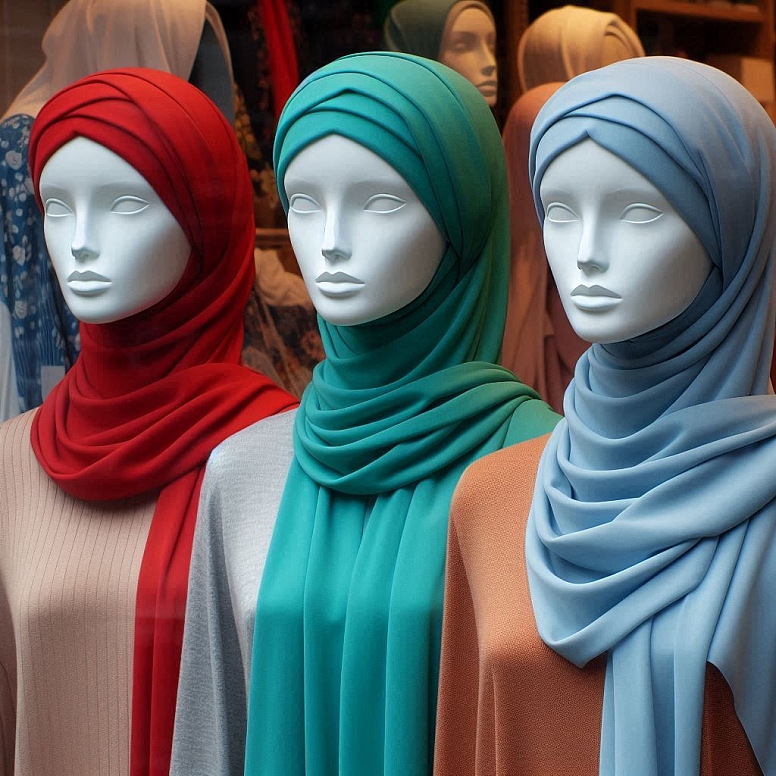
The turban hijab is a more modern take on the traditional hijab. It is popular among Muslim women who want to add a fashionable twist to their hijab style. The turban hijab is made by wrapping a scarf around the head and tying it in a knot at the back or side. This style is particularly popular in countries like Malaysia and Indonesia.
Shayla Hijab
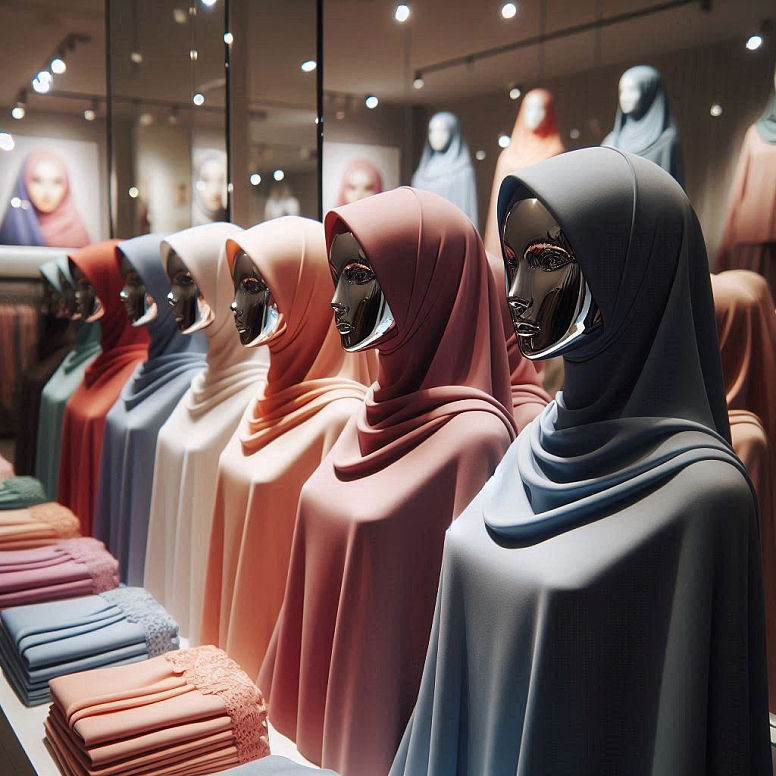
The Shayla hijab is similar to the traditional hijab, but it is narrower and longer, and it is draped over the head and shoulders. It is a popular style in the Middle East and is often paired with traditional Islamic dress. It is also a popular choice for women who wear hijab while exercising.
Al-Amira Hijab
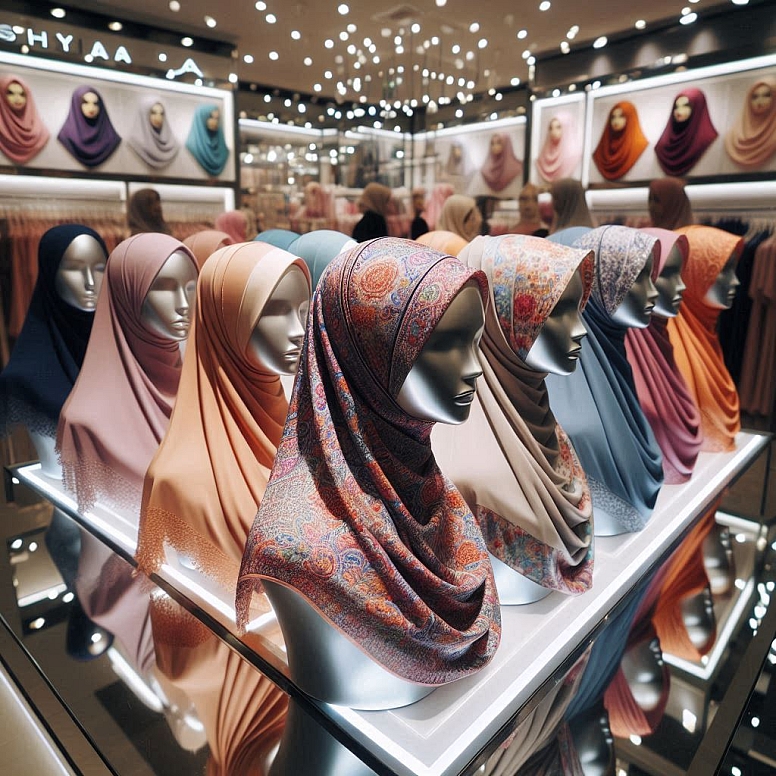
The al-amira hijab is a two-piece hijab consisting of a cap or headband and a tube-like scarf covering the head and neck. It is popular in countries like Egypt and the Gulf states and is a popular choice for Muslim women who are new to wearing hijab or who want a simple and easy-to-wear style.
Khimar Hijab
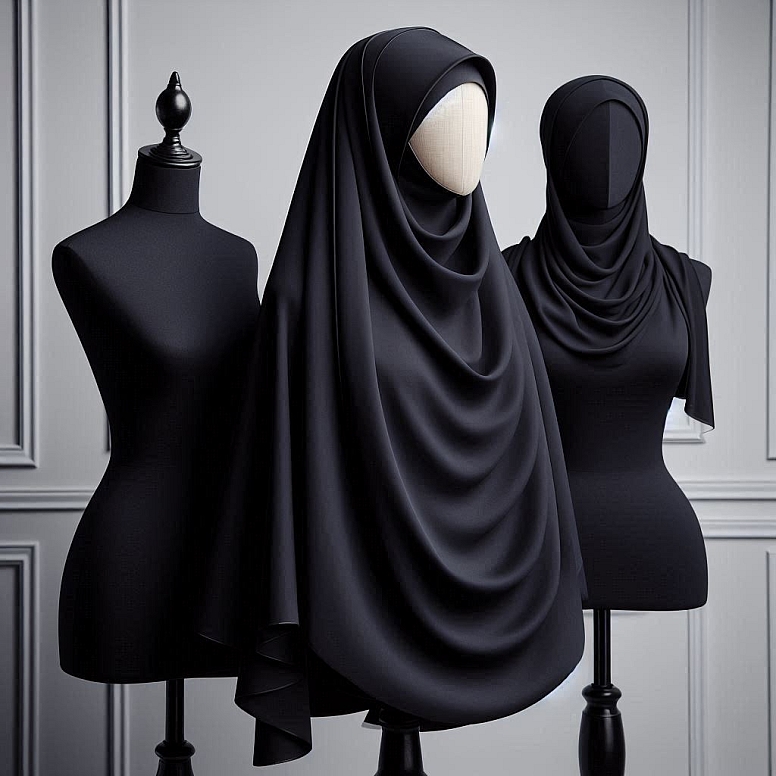
The khimar hijab is a full-body hijab that covers the head, neck, shoulders, and chest. It is often worn with a veil that covers the face and is a popular choice among conservative Muslim women. The khimar hijab is popular in countries like Saudi Arabia and Iran.
Niqab
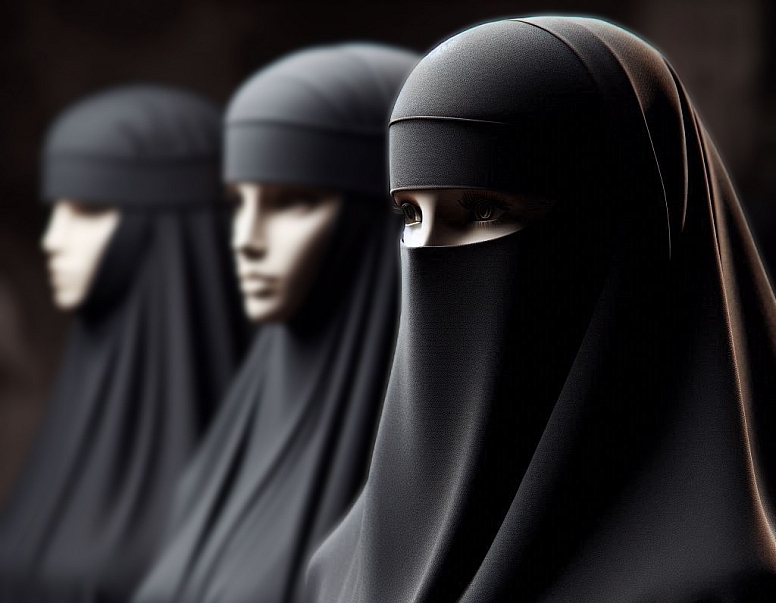
The niqab is a veil covering the face, exposing only the eyes. Some Muslim women wear it as a symbol of modesty and privacy. The niqab is often worn with the traditional hijab, which covers the head and neck. This style is popular in countries like Saudi Arabia and Yemen.
Burqa
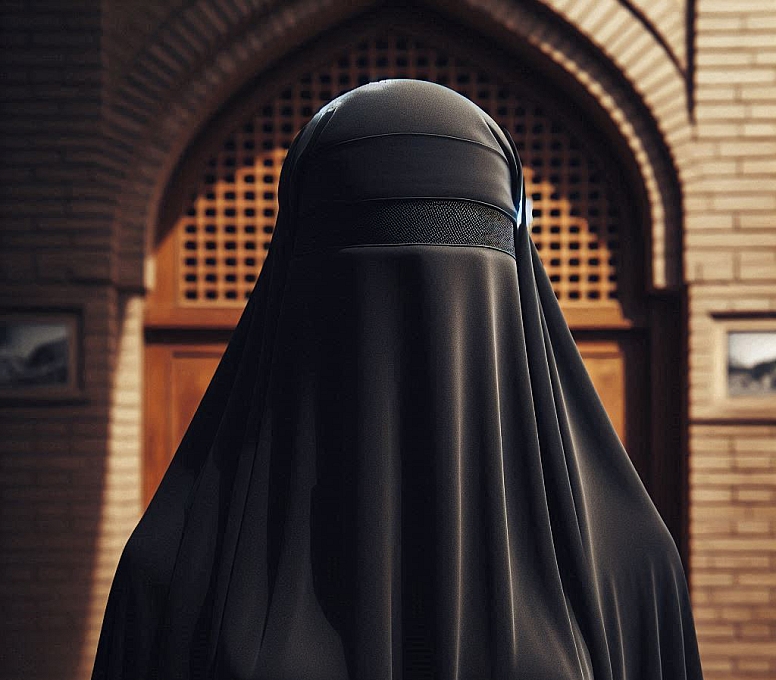
The burqa is a full-body veil that covers the entire body, including the face. The burqa is often worn with the traditional hijab, which covers the head and neck. This style is popular in countries like Afghanistan and Pakistan.
EЕџarp
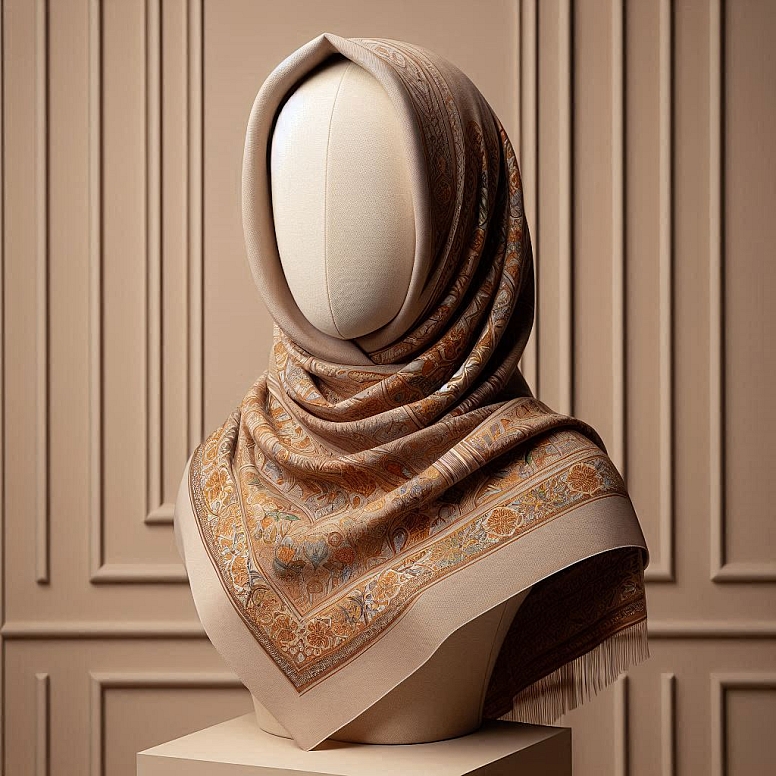
EЕџarp hijab is a type of hijab that is popular in Turkey and other parts of the Middle East. EЕџarp hijab is made from a lightweight, often silky fabric that drapes elegantly over the head and shoulders in a triangular shape. It is similar to the Shayla hijab in that it is a long, rectangular or square piece of fabric that is draped over the head and shoulders, but the fabric used for the EЕџarp hijab is typically more luxurious.
EЕџarp hijab is often worn with traditional Turkish clothing, such as the tesettГјr, a long, flowing dress that covers the body from head to toe. The hijab is also often paired with a scarf or headband to keep it in place.
One of the distinguishing features of the EЕџarp hijab is the way that it is folded and draped. Unlike other styles of hijab that are wrapped around the head, an EЕџarp hijab is folded and draped over the head and shoulders to create a soft, flowing look. The style of the hijab can be varied by changing the way it is draped, folded, or pinned.
EЕџarp hijab is popular among Muslim women in Turkey and other parts of the Middle East who want to maintain a traditional and modest appearance while still looking stylish. It is often worn to weddings, religious events, and other formal occasions, as well as in everyday life.
Tudung

Tudung is a type of hijab that is popular in Malaysia, Singapore, Indonesia, Brunei, and other parts of Southeast Asia. Tudung is a Malay word that means "covering" or "veil", and it is used to describe a wide range of head coverings worn by Muslim women.
Tudung is typically made from lightweight, breathable fabrics like cotton or chiffon, and it comes in a wide range of colours and patterns. The style of tudung can vary depending on the region and cultural tradition, but it typically covers the head and neck, and sometimes the chest as well.
One of the most popular styles of tudung is the bawal, which is a square piece of fabric that is folded and draped over the head to create a triangular shape. Another popular style is the instant tudung, which is a pre-stitched hijab that can be easily wrapped around the head and secured in place with a pin or clip.
Tudung is often worn with traditional Malay clothing, such as the baju kurung or kebaya, which are long, flowing dresses that cover the body from head to toe. The hijab is also often paired with accessories like headbands or brooches to add a touch of elegance and style.
Tudung is an important part of Malay and Southeast Asian Muslim culture, and it is worn by women of all ages and backgrounds. It is seen as a symbol of modesty, piety, and religious identity, and it is worn with pride by Muslim women throughout the region.
Battoulah
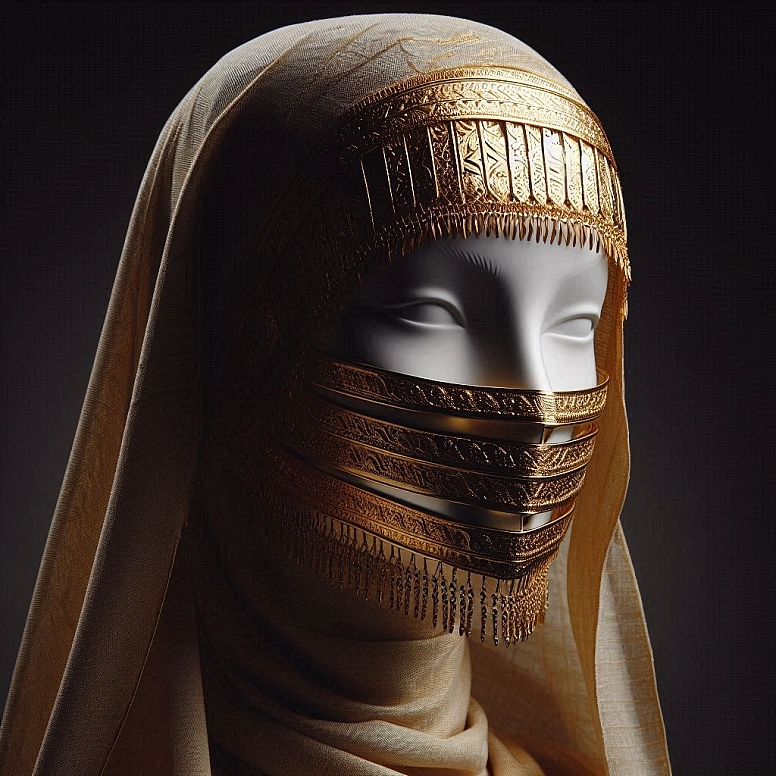
A battoulah is a type of head covering traditionally worn by Bedouin women in the Gulf countries including Bahrain, Kuwait, Saudi Arabia, United Arab Emirates, Oman, Qatar, and southern Iran.
The battoulah is a full head covering that includes a long rectangular scarf that covers the head and neck, as well as a face veil that covers the mouth and nose, leaving only the eyes exposed. The scarf is often brightly coloured and decorated with intricate embroidery, beading, or other embellishments.
Battoulah is typically worn by Bedouin women as a sign of modesty and piety, and it is often paired with traditional dress and accessories, such as long flowing dresses, belts, and jewellery. The style of battoulah can vary depending on the region and cultural tradition, but it is generally designed to provide maximum coverage while still allowing the wearer to see and breathe comfortably.
While battoulah is primarily worn by Bedouin women, it is also sometimes worn by non-Bedouin Muslim women in the Gulf region, particularly for special occasions or as a statement of cultural identity.
Chador

The chador is a type of outer garment that is traditionally worn by Muslim women in Iran, as well as in some other parts of the Muslim world. The chador is a large, rectangular piece of fabric that is draped over the head and body, with one end of the fabric held in place under the chin, and the other end draped over the head and back.
The chador is typically made from lightweight, breathable fabrics like cotton or silk, and it comes in a variety of colours and patterns. It is often decorated with intricate embroidery, lace, or other embellishments, and it can be worn on its own or over traditional clothing.
Boshiya (Ghatwa)
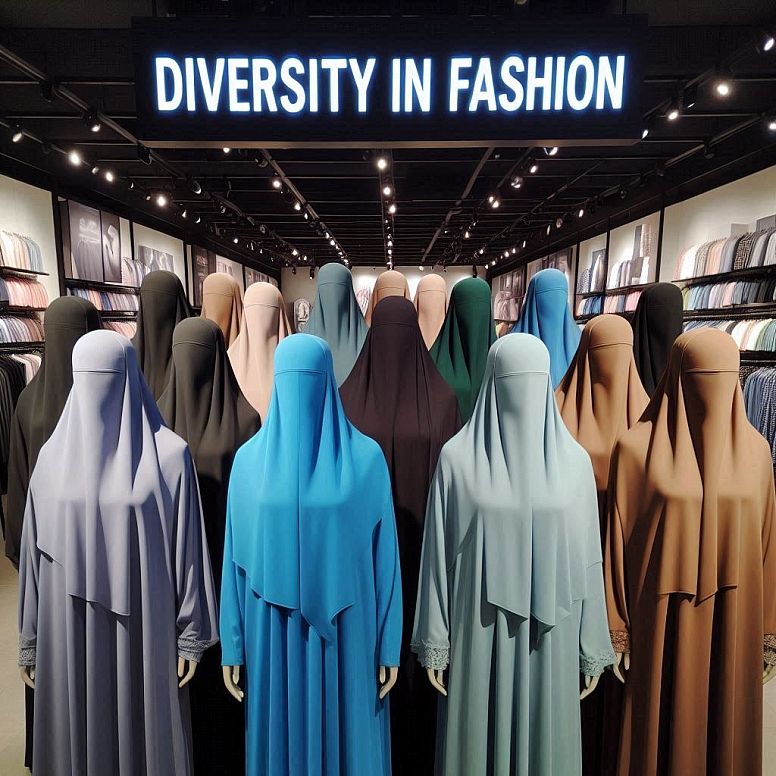
Boshiya or ghatwa are terms that are used to describe a type of burka that is worn in some parts of Afghanistan and Pakistan. This style of the burka is similar to the traditional burka, but it does not have a mesh panel over the face.
Instead, the boshiya/ghatwa is a full-body garment that covers the head, face, and body, with a slit for the eyes. It is typically made from a lightweight, breathable fabric like cotton or silk, and it is often decorated with embroidery or other embellishments.
The boshiya/ghatwa is often worn by conservative Muslim women in Afghanistan and Pakistan as a symbol of modesty and privacy. It is sometimes worn in combination with a hijab or other head covering to provide additional coverage and protection.
While the boshiya/ghatwa is not as common as the traditional burka with a mesh panel, it is still an important part of the cultural and religious traditions of some Muslim communities in the region.
Jilbab
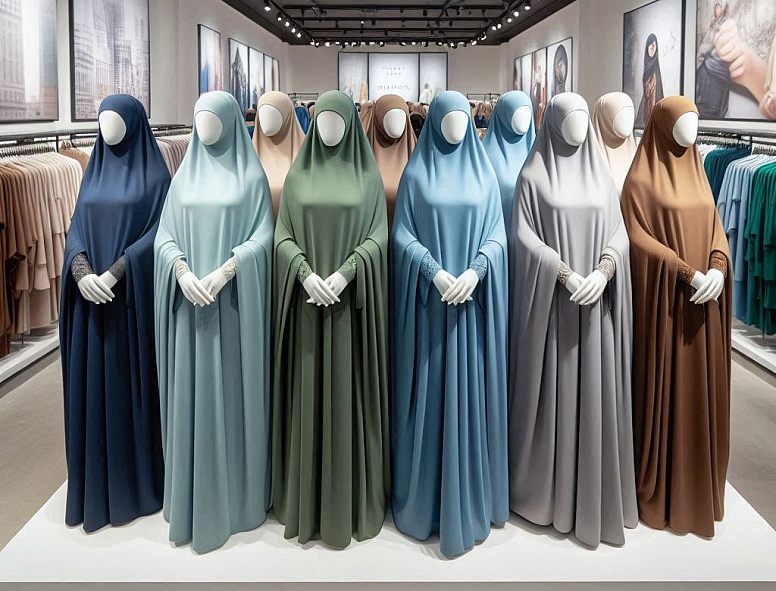
The jilbab is a type of head-to-toe abaya-style outer garment worn by Muslim women as a form of hijab or modest dress. The term jilbab refers to a type of cloak or garment that covers the entire body except for the face and hands.
The jilbab is typically made from lightweight, breathable fabrics like cotton or silk, and it comes in a variety of colours and patterns. It is usually worn over other clothing, such as a long skirt and a blouse, and it can be draped in different ways to provide more or less coverage depending on the individual's preference.
Dupatta
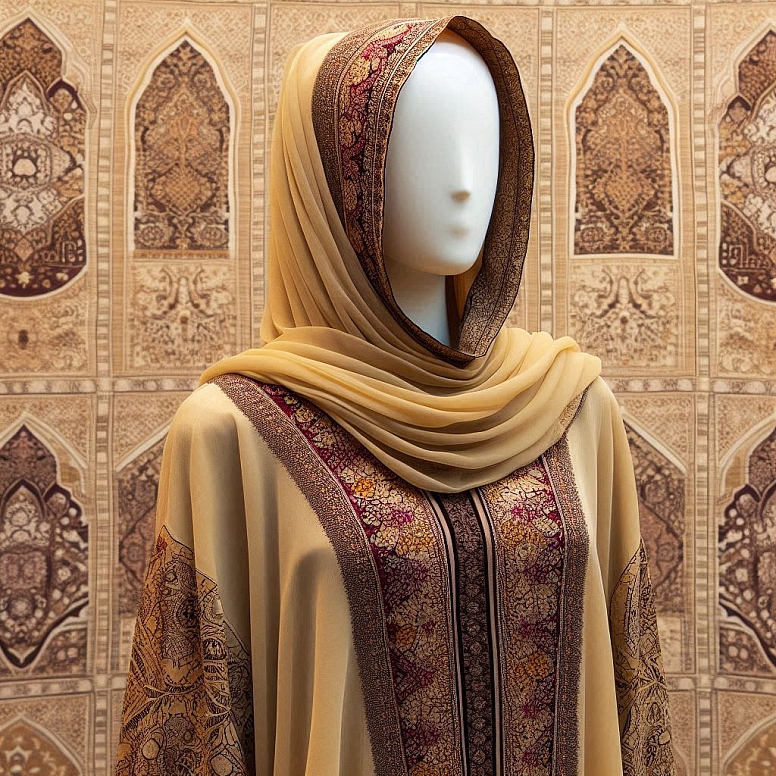
A dupatta is a long, rectangular scarf traditionally worn by women in South Asia, particularly in India, Pakistan, and Bangladesh. It is often worn as a part of traditional dress and is draped over the head and shoulders to provide modesty and coverage.
The dupatta comes in a wide variety of colours, patterns, and fabrics, and it is often intricately decorated with embroidery or other embellishments. It can be made from lightweight cotton or silk for everyday wear, or from heavier fabrics like velvet or brocade for special occasions.
In addition to providing modesty and coverage, the dupatta is also often worn as a fashion accessory and can be draped in a variety of ways to create different styles and looks. It can be worn over the head, draped over the shoulders, or even wrapped around the body like a shawl.
The dupatta is an important part of South Asian culture and identity and is often associated with traditional values and customs. However, like other forms of religious or cultural dress, its meaning and significance can vary depending on individual and community beliefs and practices.
Overall, the dupatta is a versatile and beautiful garment that reflects the diversity and richness of South Asian cultures and traditions and has become a beloved symbol of South Asian fashion and style around the world.
Doa Guan
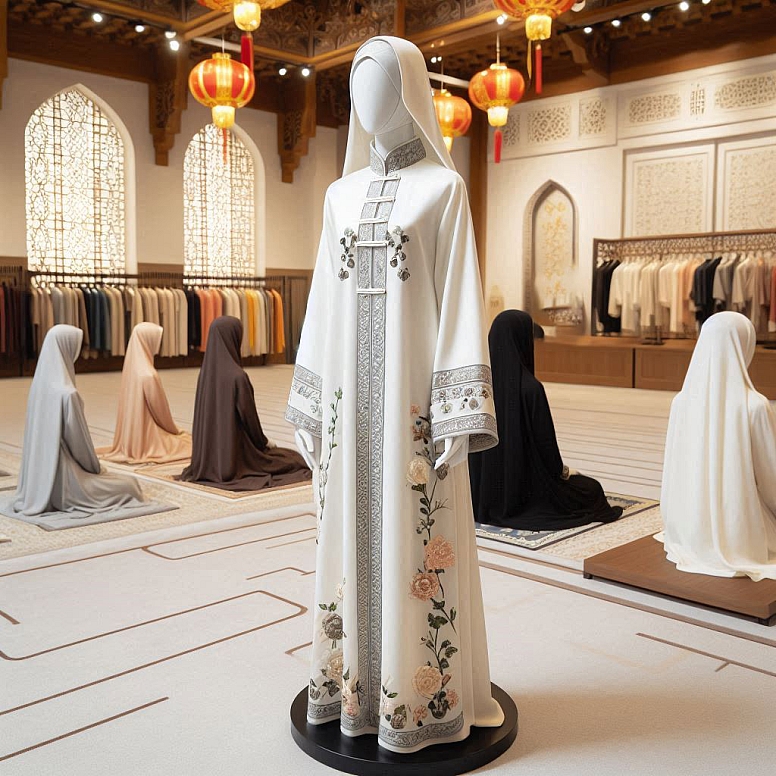
Doa Guan directly means “dress for praying", and it is a dress worn by Muslim women in China for prayer, also known as "Salat."
The Doa Guan is a long dress with a loose, flowing design that covers the entire body, including the arms and legs. It is typically made from lightweight, breathable fabrics, and may be decorated with intricate embroidery or other embellishments. The dress is designed to be worn over regular clothing during prayer, providing modesty and coverage for the woman during this important religious ritual.
The Doa Guan is part of the rich cultural and religious traditions of Chinese Muslims, who have developed their unique style of dress and practice of Islam over the centuries. It is a symbol of piety and devotion to Allah and is an important part of the daily life of Muslim women in China.
It is worth noting that there is great diversity within the Muslim community and that there are many different styles and interpretations of hijab and other forms of religious dress throughout the world. The Doa Guan is just one example of a particular type of hijab worn in a specific cultural context.
Burkini
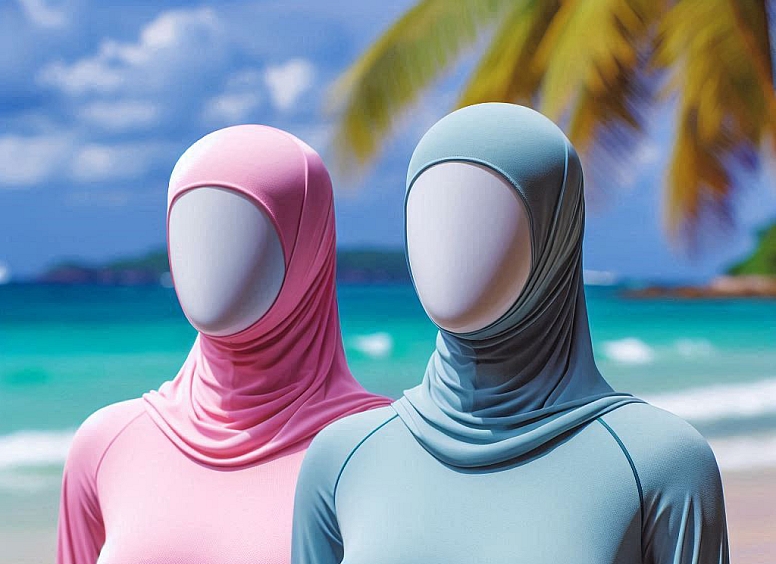
The burkini is a type of modest swimwear designed for Muslim women who prefer to cover their bodies while swimming or participating in water activities. The name "burkini" is a combination of the words "burqa" and "bikini."
The burkini is typically made from lightweight, quick-drying fabrics that are suitable for use in the water. It covers the entire body, except for the face, hands, and feet, and is designed to provide maximum coverage and comfort while still allowing the wearer to participate in swimming and other water sports.
The burkini is a relatively recent invention, first introduced by the Australian designer Aheda Zanetti in 2004. Since then, it has become increasingly popular among Muslim women around the world, particularly those who live in countries where Islamic dress is not widely accepted or where there may be cultural or religious restrictions on women's clothing.
The burkini has also been the subject of controversy in some countries, where it has been banned in public swimming pools and beaches. Some critics argue that the burkini is a symbol of oppression and promotes segregation, while supporters of the garment argue that it allows Muslim women to participate in public life while still maintaining their religious and cultural values.
Despite the controversy, the burkini has become an important symbol of the diversity and richness of Muslim cultures and traditions, and an example of how women are finding creative ways to express their faith and identity in the modern world.
Hijab Materials
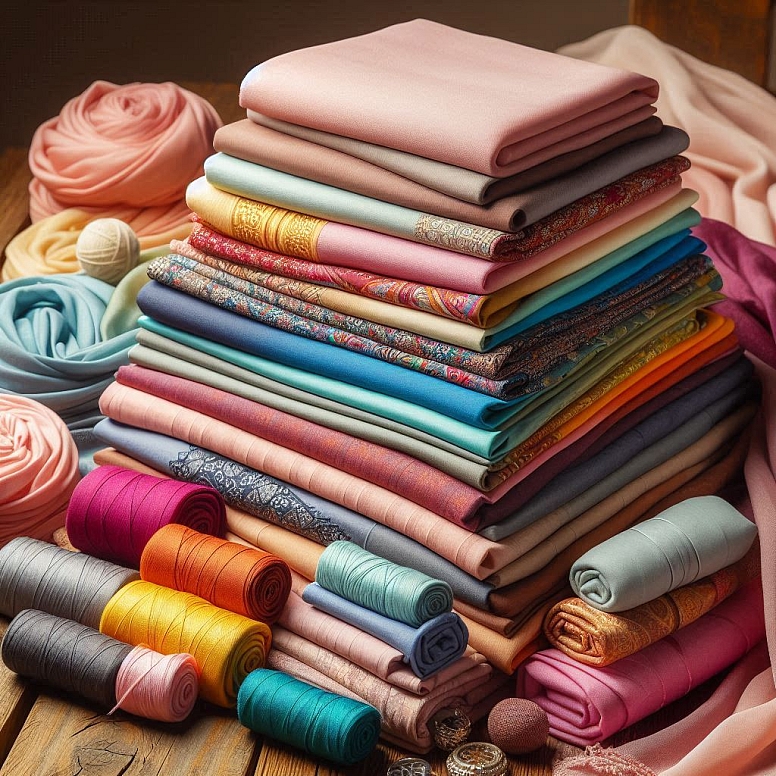
Hijabs come in a wide range of materials, including cotton, silk, chiffon, and jersey. Choosing the right material is important to ensure that the hijab is comfortable, breathable, and easy to wear. Cotton is one of the most popular materials for hijabs as it is soft, comfortable, and easy to care for. Silk is another popular material for hijabs, as it is lightweight, breathable, and has a luxurious feel. Chiffon is also a popular choice for hijabs as it is lightweight, flowy, and has a soft texture.
Cotton, silk, chiffon, jersey, Modal, Georgette, and Rayon Viscose are all popular materials for hijabs. Each material has its unique characteristics, which can affect how it drapes, feels, and looks. Here's a brief overview of each material:
Cotton: Cotton is a natural, breathable fabric that is soft and comfortable to wear. It is also durable and easy to care for, making it a popular choice for everyday wear. Cotton hijabs come in a variety of styles and colours, and can be worn in both casual and formal settings.
Silk: Silk is a luxurious, smooth fabric that has a soft, lustrous sheen. It is lightweight and drapes beautifully, making it a popular choice for formal occasions. Silk hijabs are often used for weddings, parties, and other special events.
Chiffon: Chiffon is a lightweight, sheer fabric that has a flowing, delicate texture. It is often used for formal wear and can add a touch of elegance to any outfit. Chiffon hijabs come in a variety of colours and styles and can be layered for a more modest look.
Jersey: Jersey is a stretchy, comfortable fabric that is often used for athletic wear. It is soft and breathable, and drapes well, making it a popular choice for everyday wear. Jersey hijabs are often used for sports or exercise, but can also be worn in more casual settings.
Modal: Modal is a type of rayon that is made from beech tree pulp. It is a soft and lightweight fabric that drapes well, making it a popular choice for hijabs. Modal hijabs are often preferred for their comfortable and breathable nature.
Georgette: Georgette is a lightweight, crinkly fabric that is typically made from silk or synthetic fibres like polyester. It has a slightly sheer texture and drapes beautifully, making it a popular choice for hijabs. Georgette hijabs are often used for more formal occasions due to their elegant and flowing appearance.
Rayon Viscose: Rayon Viscose is a semi-synthetic fabric that is made from regenerated cellulose fibres. It is soft and lightweight and has a silky texture that is similar to natural fibres like cotton or silk. Rayon viscose hijabs are popular for their comfortable and breathable nature and are often used for everyday wear.
When choosing a hijab material, it's important to consider factors such as comfort, breathability, and durability. Cotton, silk, chiffon, and jersey are all popular options that can be worn in a variety of settings. Modal, Georgette, and Rayon Viscose are all lightweight and comfortable options that are ideal for warmer weather. They are also easy to drape and style, making them a popular choice for both casual and formal occasions.
However, it's important to note that these materials may require special care when washing and handling to ensure that they maintain their quality and appearance over time. Always follow the care instructions provided by the manufacturer to keep your hijab looking its best.
Hijab Mistakes
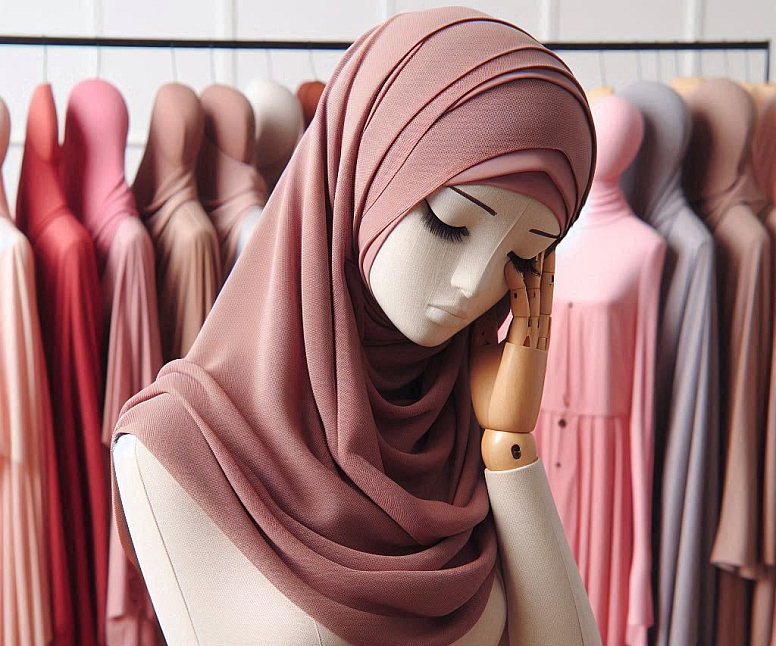
As with any type of clothing, certain mistakes can be made when wearing a hijab. Some of the most common hijab mistakes include:
Poor fabric choices: Choosing the wrong type of fabric for your hijab can make it uncomfortable to wear and difficult to style. It's important to choose fabrics that are lightweight, breathable, and easy to drape, such as cotton or chiffon.
Improper sizing: Wearing a hijab that is too small can create an unflattering look and make it difficult to style while maintaining modesty at the same time. It's important to choose the correct size and shape of hijab for your face and upper body shape.
Wearing it too tight or too loose: Wearing your hijab too tight can create an unflattering, pinched look while wearing it too loose can make it fall off easily or create a sloppy appearance.
Incorrect placement: The placement of your hijab is also important. It should cover your hair and neck completely, and be positioned so that it doesn't slip or slide off.
Ignoring the rest of your outfit: Wearing hijab doesn't mean that you should neglect the rest of your outfit. It's important to choose clothing that is both modest and stylish, and that complements your hijab.
Not accessorizing: Accessories can be a great way to add personality and style to your hijab. Don't be afraid to experiment with different styles of hijab pins and headbands.
Copying others: While it's important to take inspiration from others, it's also important to find your unique style and to wear hijab in a way that feels authentic and comfortable to you.
See-through material: Another common hijab mistake is wearing see-through material. Wearing a hijab that is made of see-through material defeats the purpose of wearing the hijab in the first place, which is to provide modesty and cover the body.
If the material of your hijab is too thin or sheer, it may reveal your hair or skin underneath. This can also make you feel uncomfortable or self-conscious, which can detract from the overall purpose of wearing a hijab.
To avoid this mistake, make sure to choose a hijab made of a fabric that is opaque and provides full coverage. Avoid fabrics that are too thin, such as silk or satin, and opt for thicker materials like cotton or jersey.
If you do choose to wear a hijab made of thinner material, make sure to layer it over a solid-coloured under-scarf or a cap to ensure that your hair and skin are fully covered. Additionally, make sure to check the hijab in natural light to ensure that it is not see-through before wearing it out in public.
By choosing the right fabric and taking the necessary precautions, you can avoid the mistake of wearing a see-through hijab and ensure that you are wearing hijab in a way that is modest and respectful, while at the same time creating a stylish and comfortable look that reflects your personality and values.









